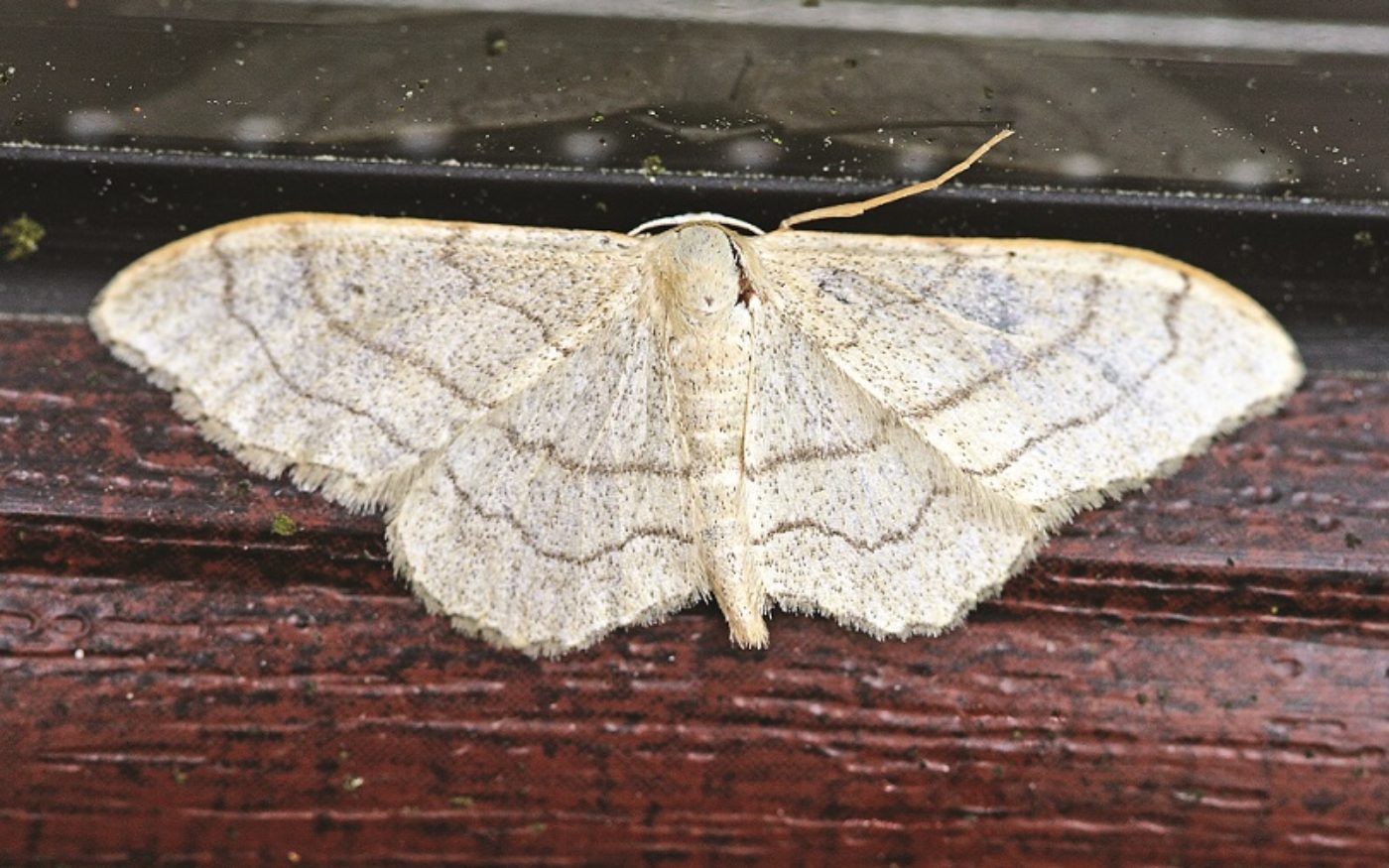Order
Butterflies and moths
There are almost 2,000 different moth species in Britain, rather more than the 50 to 60 butterflies.
Moths are mostly nocturnal, but some species are day-flying and often brightly coloured. The Riband Wave Moth is a common moth species throughout Britain.
What do they look like?
Riband Wave Moth adults have slender bodies with greyish white to yellow orange wings and a 23 to 30 mm wingspan. They have three distinctive dark lines or 'waves' running across their wings and have two colour forms. The dark form has a dark brown area of 'ribbon' between the second and third cross lines, the pale form simply has the dark lines against the wing background. At rest the Riband Wave Moth sweeps back its wings into a wide triangle.
Caterpillars of the Riband Wave Moth are brown, wrinkled and stick like. They have 3 pairs of legs at the front, two pairs of prolegs at the back and 'loop' as they move, arching their body up between the legs and prolegs.
Where do they live?
Adult Riband Wave Moths are present in grasslands and urban gardens, caterpillars feed on grassland plants such as dock and dandelion.
Where can they be found?
The Riband Wave Moth is common throughout Britain.
When can you see them?
Adults fly between June and September.
Riband Wave Moth caterpillars feed in early Spring and in Autumn.
Life cycle
Adults Riband Wave Moths fly and mate in summer; eggs are laid and the moth then overwinters as a small caterpillar.
Caterpillars feed and grow further in spring, pupating and emerging as adults in early summer.
In Southern Britain, where temperatures are warmer, a second generation can occur within the same year, with caterpillars growing, pupating and then adults emerging to mate and lay eggs in Autumn.
What do they do?
Riband Wave Moths are nocturnal and are attracted to light. The caterpillars are polyphagous, eating a wide range of food plants.
Did you know?
The Riband Wave Moth species is in the taxonomic family Geometridae, the name of which means 'earth measurer', because of the looping movement of this moth family's caterpillars.

